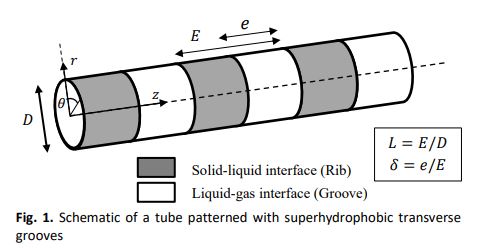Effects of Normalized Periodic Unit Length of Superhydrophobic Transverse Grooves on Thermal Developing Flow in Tube
DOI:
https://doi.org/10.37934/arfmts.92.2.94103Keywords:
Tube flow, Heat transfer, Thermal management, Internal flowAbstract
The flow dynamics and heat transfer in fully-developed flow region changes significantly with the size of the water-repellent microstructures. It is noted that the hydrophobic coated surface could reduce the wall friction, thereby increasing the mass flow rate through the tube. This leads to the interest in employing this salient surface for heat transfer application. Numerical study is carried out on thermal entrance flow under the influence of textured superhydrophobic surface with transverse grooves and ribs. In this study, the effect of normalized periodic unit length is investigated. Under constant heat transfer rate condition, it is revealed that patterning the water repellent surface along the tube wall can be beneficial for heat transfer application, in particularly in the thermal developing region, with the predicted water temperature to be consistently lower than that of smooth walls.
Downloads

































